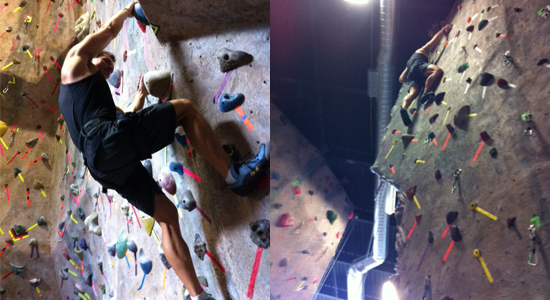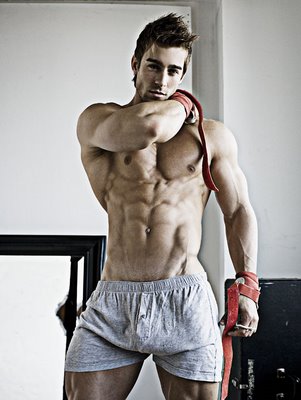There are no shortage of exercises to add variety to you workout - and switching things up can prevent a stale workout and plateaued results. By incorporating kettlebells, changing the base of stability, taking a new class or trying new exercises, it’s easy to keep you workout fresh and challenging.
Having said that, there are five tried and true exercises that every workout regime should include. These exercises have passed the test of time and have been used by bodybuilders, powerlifters and workout enthusiasts for generations.
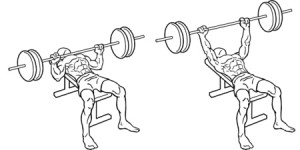 Bench press. The godfather of strength training, any gym worth your time will have a handful of bench presses. Some are flat, some are inclined and some are declined - but all are a great way to build strong and powerful chest muscles. In fact, the bench press is one of the three lifts in the sport of powerlifting. Though this exercise primarily works your pectoralis major muscle (i.e., your pecs), supporting muscles like the anterior deltoids, serratus anterior, coracobrachialis, scapulae fixers, trapezii, and the triceps are also trained.
Bench press. The godfather of strength training, any gym worth your time will have a handful of bench presses. Some are flat, some are inclined and some are declined - but all are a great way to build strong and powerful chest muscles. In fact, the bench press is one of the three lifts in the sport of powerlifting. Though this exercise primarily works your pectoralis major muscle (i.e., your pecs), supporting muscles like the anterior deltoids, serratus anterior, coracobrachialis, scapulae fixers, trapezii, and the triceps are also trained.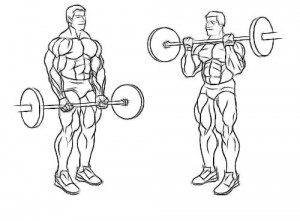 Barbell bicep curl. Of all the bicep exercises that I’ve tried, none compare in their effectiveness to the barbell bicep curl. By adding a barbell, you’re able to increase the amount of resistance that your muscles work against - and the results speak for themselves. Though you’ll primarily work your biceps brachii muscles, your brachialis (lower biceps) and brachioradialis (forearm) are also trained.
Barbell bicep curl. Of all the bicep exercises that I’ve tried, none compare in their effectiveness to the barbell bicep curl. By adding a barbell, you’re able to increase the amount of resistance that your muscles work against - and the results speak for themselves. Though you’ll primarily work your biceps brachii muscles, your brachialis (lower biceps) and brachioradialis (forearm) are also trained.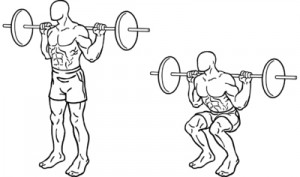 Squats. Want a bigger and stronger butt? No exercise compares to the squat in its effectiveness. Also performed in powerlifting, squats primarily work your gluteus maximus, quadriceps and hamstrings. Your erector spinae, transverse abdominus, gluteus medius, gluteus minimus, adductors, soleus and gastrocnemius will also get some love. Proper form is essential for a safe and effective squat, so it’s important to do your homework or consult with a trainer before you jump into your gym’s squat rack or power cage.
Squats. Want a bigger and stronger butt? No exercise compares to the squat in its effectiveness. Also performed in powerlifting, squats primarily work your gluteus maximus, quadriceps and hamstrings. Your erector spinae, transverse abdominus, gluteus medius, gluteus minimus, adductors, soleus and gastrocnemius will also get some love. Proper form is essential for a safe and effective squat, so it’s important to do your homework or consult with a trainer before you jump into your gym’s squat rack or power cage.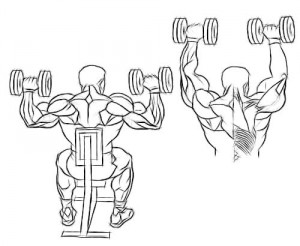 Shoulder press. Sometimes called the overhead press, there are innumerable variations of this popular exercise. In terms of building size or strength, there are no shoulder exercises that can touch the effectiveness of a good barbell or dumbbell shoulder press. Specially, this exercise is great for your deltoids - but it also engages your triceps brachii and trapezius muscles.
Shoulder press. Sometimes called the overhead press, there are innumerable variations of this popular exercise. In terms of building size or strength, there are no shoulder exercises that can touch the effectiveness of a good barbell or dumbbell shoulder press. Specially, this exercise is great for your deltoids - but it also engages your triceps brachii and trapezius muscles.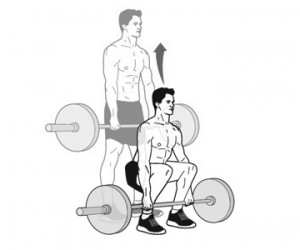 Deadlift. Also one of the three powerlifting exercises, the deadlift is a compound exercise that engages a large number of muscles including your latissimus dorsi, trapezius, erector spinae, gluteals, hamstrings, quadriceps and hip flexors. In other words, your leg, butt and back muscles will all be screaming after a good set of deadlifts. Even your forearms, to a lesser degree, and obliques will be engaged. Though the deadlift is extremely effective, it’s not for everyone. For individuals with back injuries or certain joint issues, other exercises may be a better fit.
Deadlift. Also one of the three powerlifting exercises, the deadlift is a compound exercise that engages a large number of muscles including your latissimus dorsi, trapezius, erector spinae, gluteals, hamstrings, quadriceps and hip flexors. In other words, your leg, butt and back muscles will all be screaming after a good set of deadlifts. Even your forearms, to a lesser degree, and obliques will be engaged. Though the deadlift is extremely effective, it’s not for everyone. For individuals with back injuries or certain joint issues, other exercises may be a better fit.
Of course, you don’t want to do each of these exercises in every workout. It’s best to break your gym sessions out so that each workout targets different muscle groups. Incorporate the bench press on a chest day, the barbell bicep curl on arm days and so on.
In my opinion, these are the top five exercises to include in any workout regime - but I’d love to hear what you think. Which five exercises top your list? Let me know in the comments below.








